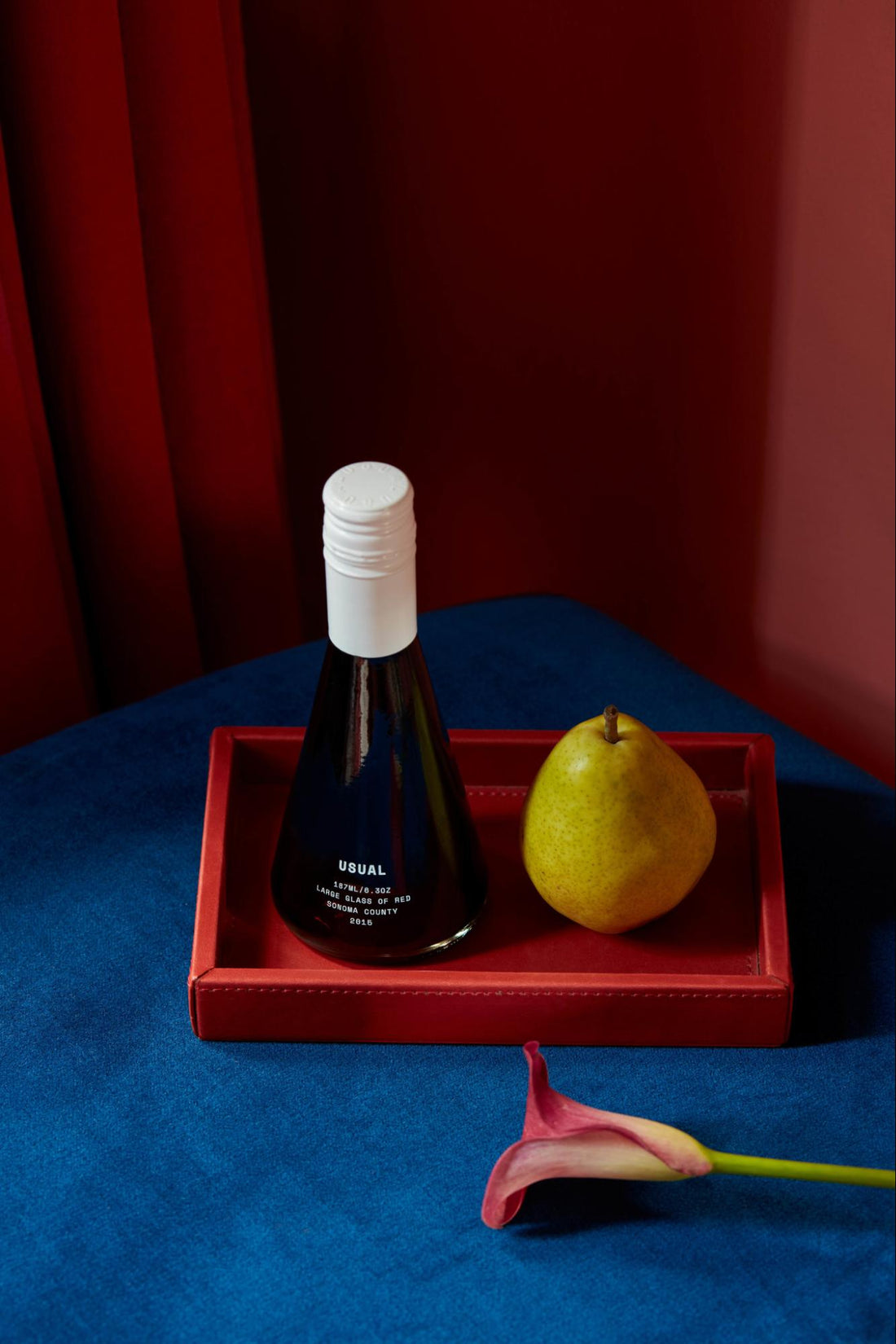
Sangiovese Wine: Your Guide To Taste, Origins, and Serving
McKenzie HaganExploring the Sangiovese Wine
The allure of Italian culture is undeniable, from its food and history to its fashion and globally renowned wines like Sangiovese. If you're captivated by dreams of Tuscan life, Sangiovese wine, an Italian favorite, brings you a step closer without needing a plane ticket.
The Sangiovese grape, a key ingredient in Sangiovese wines, has been a part of Italian culture for thousands of years and is grown extensively across Italy. While Sangiovese red wine may not hold the same global popularity as some other Italian wines, like Prosecco, it's an experience not to be missed.
In this guide, we'll introduce you to what is Sangiovese wine. From its various names and fascinating history to its complex tasting notes, you'll gain all the knowledge needed to embark on your next Italian wine love affair.
The Connection Between Sangiovese Wine and the Blood of Jove
Sangiovese is a wine known by many names, but none are quite as fascinating as “The Blood of Jove.” Named in Central Italy thousands of years ago, the name Sangiovese is translated from the Latin Sanguis Jovis, meaning the blood of Jupiter, or the Roman king of the gods.
While evidence is shaky, the legend states that Roman monks named the wine as tribute to Jupiter, suggesting that this wine flowed through his very veins.
Not only is this legend fascinating, but it also states the significance of the Sangiovese grape to the Roman people and to Italian history.
Understanding What Sangiovese Wine Is
Sangiovese (pronounced san-joe-vei-zay) is an authentically Italian wine. Although the grape is cultivated in other wine regions globally, it’s primarily found in Italy.
Sangiovese wines are medium-bodied, with medium to high tannins, and are on the higher end of the alcohol content scale. They can be compared to Merlot, although Sangiovese wine exhibits high acidity, much more than what you would find in Merlot.
As with many wine varietals, Sangiovese is known by several regional names. If you’ve enjoyed wine in Italy, chances are you may have tasted Sangiovese wine, possibly under a different name.
Some of the most popular names include:
- Prugnolo Gentile
- Chianti
- Montefalco Rosso
- Sangiovese Grosso Brunello di Montalcino
- Nielluccio, Rosso di Montepulciano
- Vino Nobile di Montepulciano
- Morellino, Rosso di Montalcino
- Morellino di Scansano
If you appreciate wines with a wide depth of flavor, complex savory notes, and sharp acidic qualities, Sangiovese might be the wine for you. If these tasting notes don’t intrigue you, don’t hesitate to experiment with Sangiovese blends, where these intense flavors are often balanced with lighter wines. You could also try Montepulciano wine, a close cousin of Sangiovese, for a dry wine with vanilla and spice notes.
Sangiovese is a popular blending grape. You’ll also find it in Super Tuscans, which are wines created by blending French and Italian grapes. These Super Tuscans are wine rebels — they don’t fit into the Denominazione di Origine Controllata (DOC) classification system due to their use of grapes grown outside of the DOC region.
Our own Usual Red is also a Sangiovese wine blend. We blend Syrah, Zinfandel, Sangiovese, and Pinot Noir to make a wine which has notes of red fruit, dark cherry, and cocoa.
Sangiovese: The Ubiquitous Grape

The Sangiovese grape is highly adaptable, thriving in a wide variety of environments, thus making it easier to grow. This quality has earned it the nickname of the 'chameleon grape'.
Sangiovese wines produced in Tuscany are likely the most revered in both the New and Old World of wine. However, this fascinating red wine grape is grown throughout Italy and the world.
Notable Italian regions include:
- Umbria, Central Italy
- Campania, Southern Italy
- Romagna, Northern Italy
Beyond Italy, the grape also thrives on the French island of Corsica in Patrimonio AOC (Nielluccio), a notable region with the world's second largest Sangiovese yield.
While much rarer, some New World wine regions like the United States also grow Sangiovese grapes.
It is not common but certain New World wine regions also cultivate Sangiovese grapes, including:
- Mendoza, Argentina
- Napa Valley, California
- Sonoma County, Washington
- Barossa Valley, Australia
Like many grape varietals, the Sangiovese grape produces different tasting wines depending on where it was grown. Therefore, we advise you to try a range of Sangiovese wines, as even the area of Italy the grape was grown in could alter the subtle flavors.
The Unique Taste of Sangiovese Wine
While Sangiovese wine's taste varies depending on its production region or blending components, some common tasting notes are identifiable.
Red fruit flavors, such as red cherry, strawberry, plum, and raspberry are almost always cited as Sangiovese’s primary flavors. However, this grape variety is also praised for its complex savory flavors. Some of these include:
- Herbaceous notes
- Leather
- Clay
- Tomato
- Smoke
- Tobacco
If you appreciate wines with a wide depth of flavor, complex savory notes, and sharp acidic qualities, Sangiovese might be the wine for you. If these tasting notes don’t intrigue you, don’t hesitate to experiment with Sangiovese blends, where these intense flavors are often balanced with lighter wines.
Food Pairings with Sangiovese Wine
When considering food pairings for Sangiovese wine, dishes rich in olive oil or butter are perfect matches. The high tannins in the wine will cut through these fatty dishes, creating a balanced taste experience.
As Sangiovese wine is an Italian native, we think the perfect pairing is something traditionally Italian. We’re thinking rich, cheesy pasta dishes, mozzarella-coated pizzas, and indulgent salads, with plenty of sundried tomatoes and olives.
How to Serve Sangiovese Wine
Unlike some of the more aromatic red wines, such as Tempranillo, Sangiovese doesn’t have a strong aroma, so there's no need for a large bowled glass. A standard wine glass will serve perfectly.
As for temperature, 60-65 degrees Fahrenheit is the optimal temperature for this red. If you don’t have a thermometer, a good rule of thumb is to place your bottle in the fridge for an hour, then remove an hour before serving. You don’t want your wine to be chilled, but room temperature is actually too warm for red wine.
Sangiovese wine benefits from aeration, so if you have a decanter, consider decanting your wine an hour or so before serving to really bring out those subtle flavors.
Embrace the Wine of the Gods: Sangiovese

With a medium body, high tannins, and high acidity, Sangiovese can be an intense wine to get on board with. However, due to its savory flavors and ability to adapt to its environment, the Sangiovese grape is slowly making its way across the world, and finding itself in a host of interesting blends. So, if you don’t like the sound of it at first, you may love it blended with other red grapes.
To give Sangiovese a try, visit our shop, where you can sample a bottle of our Usual Red Blend - a delightful combination of Sangiovese, Pinot Noir, Syrah, and Zinfandel.







